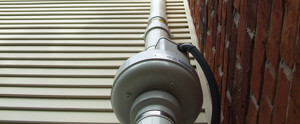Facts Every Homeowner Should Know About Radon
Guest Post By: Cherie Summa, P.E., St. Louis Radon Test and Mitigation
8661 Grant Road, Suite C, St. Louis, MO 63123
Knowing how much radon is in your home could save your life. Radon is the second leading cause of lung cancer after cigarette smoking. If you smoke and live in a home with high radon levels, you increase your risk of developing lung cancer by ten times. The U.S. Environmental Protection Agency and the Surgeon General’s office estimate radon is responsible for more than 20,000 lung cancer deaths each year in the U.S. 1 in 5 homes in Missouri have elevated levels of radon.
What is radon?
Radon is a gas that forms naturally when radioactive metals – like uranium, thorium, or radium – break down in rocks, soil, and groundwater. Radon is invisible; you can’t see, smell, or taste it. When you breathe in radon, radioactive particles from radon gas can get trapped in your lungs. Over time, these radioactive particles increase the risk of lung cancer. It may take years before health problems appear.
Where does radon come from?
Radon comes naturally from the earth, and people are always exposed to it. Radon can come in through cracks and gaps in buildings and homes. Some homes have higher levels of radon than others. Having your home tested is the only effective way to determine whether you and your family are exposed to high levels of radon.
How do I test for radon?
Call a licensed radon measurement company to place a professional 48-hour radon test in your home. You can also buy a DIY kit at the local hardware store if you aren’t involved in a real estate transaction. The test should be placed in the lowest livable level of your home. Testing is inexpensive, especially considering it can be life saving for you and your family.
How much is too much?
No level of radon exposure is considered completely safe; however, the EPA recommends reducing radon levels in your home if your measurement is 4.0 pCi/L or higher.
How do I reduce the level of Radon in my home?
The EPA recommends using a certified radon mitigation contractor. Lowering high radon levels requires technical expertise and special skills. Systems should be installed in accordance with the standards of the program that certified them. In Missouri they should be certified by AARST or IEMA. A properly designed and constructed radon mitigation system will reduce the radon level in your home. They are one the least expensive home repairs that you can make and typically cost between $785 – $1100. The cost of the system may vary according to the home’s design, size, foundation and construction materials.
For more information call St. Louis Radon Test and Mitigation at 636-200-2875 or go to the website www.stlradon.com.
To find the blog on Jon Mendelson Realtor's web-site go to http://www.jonmendelson.com/facts-every-home-owner-know-radon/.




